This World War Two 82nd Airborne Division uniform grouping belonged to a member of the 319th Glider Field Artillery Battalion. It was purchased from him in the late 1980s. He was with the 319th GFAB through all of its campaigns during WWII. This Veteran, and the 319th GFAB, first saw action while supporting Darby’s Rangers during the invasion of Italy in September 1943. Darby had picked the 319th GFAB to be the artillery support for his Rangers during the invasion of Italy. The 319th GFAB saw heavy action during this campaign.
He next saw action when the 319th GFAB was landed in Normandy via gliders on D-Day, June 6, 1944. The 319th GFAB again saw heavy action during the Normandy campaign. The next campaign for this Veteran was Market Garden, the invasion of Holland. This was followed by more heavy fighting during the Battle of the Bulge. The 319th GFAB continued to deliver artillery fire against the Germans as the 82nd Airborne Division pushed into Germany, in the closing months of the War.
This grouping consists of his Ike jacket, his wool shirt, overseas cap, and some letters and documents. After the end of the War, he spent a brief amount of time assigned to the 17th Airborne Division before being sent home. This is the reason his shirt and Ike jacket have the 17th Airborne Division patch on the left sleeve. His Ike jacket has the 82nd Airborne Division patch on the right sleeve indicating combat with that former unit.
His Ike jacket has the pin back, distinctive unit insignia, of the 319th Glider Field Artillery Battalion on the collar. The red oval behind his glider rider wings indicates airborne artillery. His overseas cap has the red piping used by artillery units and the cap disc is the style used by both paratroopers and glider towards the end of the War. The ribbon bar is British made and has the arrowhead indicating participation in an invasion. The final picture is of a letter that the Veteran included when he sold the grouping.
- 319th GFAB Grouping
- 319th GFAB Ike Jacket Insignia
- 319th GFAB Right Sleeve Ike Jacket
- 319th GFAB Left Sleeve Ike Jacket
- 319th GFAB DI
- 319th GFAB Glider Badge Artillery Oval
- 319th GFAB British Made Ribbon Bar
- 319th GFAB 82nd Airborne Ike Jacket Patch
- 319th GFAB 17th Airborne Ike Jacket Patch
- 319th GFAB Grouping Shirt
- 319th GFAB Shirt Right Sleeve
- 319th GFAB 82nd Airborne Shirt Patch
- 319th GFAB 17th Airborne Shirt Patch
- 319th GFAB Overseas Cap
- 319th GFAB Airborne Overseas Cap Disc
- 319th GFAB Grouping Letter from Veteran



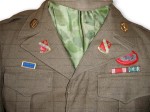


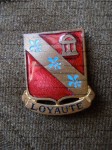

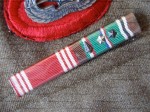
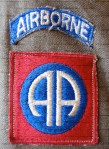



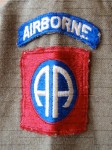

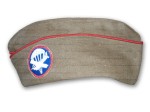
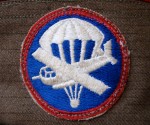
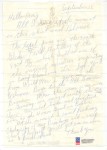








You must be logged in to post a comment.